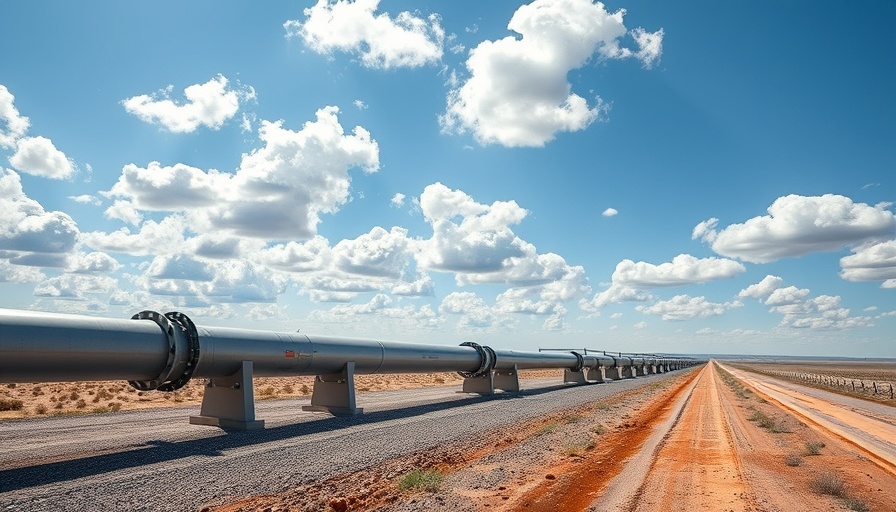
Examining the Direction of U.S. Natural Gas Pipelines
An alarming trend is emerging in the vast landscape of U.S. natural gas infrastructure: a significant majority of new pipelines are not designed to meet domestic energy needs but instead aim to facilitate the export of liquefied natural gas (LNG) overseas. According to a report by the Center for Energy & Environmental Analysis (CEEA), over 75% of the projected pipeline capacity under development is earmarked for exports, raising urgent questions about the implications for climate change and energy policy.
Environmental Concerns: A Looming Energy Crisis
The implications of this pipeline buildout extend far beyond just infrastructure. The report highlights that if all planned pipelines operate at their full capacity, emissions tied to burning this additional gas would dwarf those produced by all fossil fuel sources currently in operation across the U.S., specifically coal-fired power plants. In fact, these emissions could be two and a half times greater, demonstrating a troubling trend toward rising greenhouse gas production.
Natural gas, once hailed as a cleaner alternative, carries with it a hidden cost. Methane, a potent greenhouse gas, leaks throughout the natural gas supply chain—from extraction at wellheads to transportation through pipelines and shipping via LNG carriers. This serves as a stark reminder that the environmental impact of natural gas requires closer scrutiny.
Political Shifts and Regulatory Challenges
Recent political shifts have led to the rollback of key regulations designed to mitigate methane emissions, compounding the environmental challenges posed by the new pipeline projects. Under the previous administration, measures intended to curb excessive methane releases were rescinded, leaving many experts wondering about the future of the industry’s environmental oversight.
As the U.S. ramps up production of natural gas in adherence to market demands, the implications for climate policy become increasingly complex. Critics, including CEEA President Jeremy Symons, express concern that this trajectory will lock the nation into a dependency on fossil fuels, hindering progress toward cleaner energy alternatives. “The money flowing to gas pipeline infrastructure is not slowing and is intended to push U.S. gas production even higher,” Symons stated.
Future Predictions: The Role of Renewable Resources
The current push toward natural gas infrastructure begs questions about sustainability and the global shift towards renewable energy. With 99 billion cubic feet per day of additional capacity planned, the landscape of U.S. energy production is at a crossroads. Without concerted efforts to transition to renewable resources, the nation risks extending its reliance on fossil fuels well into future decades, contrary to the urgent need for cleaner energy solutions.
The continued investment in gas pipelines underscores a societal need to re-evaluate both the strategic direction and regulatory framework governing the energy sector. The transition to greener resources is not merely environmental progress; it represents a significant opportunity for economic growth, job creation, and innovation in sustainable technologies.
Conclusion: A Call for Sustainable Energy Solutions
The future of the U.S. energy market hinges on the decisions made today regarding natural gas, pipeline infrastructures, and renewable resources. The increase in fossil fuel exports not only threatens to exacerbate climate change but also poses questions about the sustainability of U.S energy policy. Addressing these issues requires collective action, innovative thinking, and a commitment to forging a path toward a cleaner, more sustainable energy future.
 Add Row
Add Row  Add
Add 




 Add Row
Add Row  Add
Add 

Write A Comment